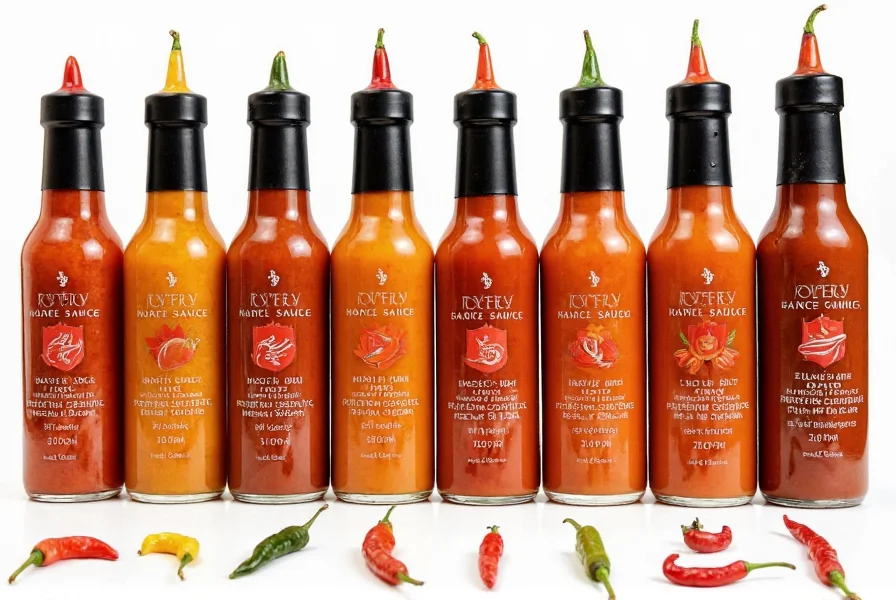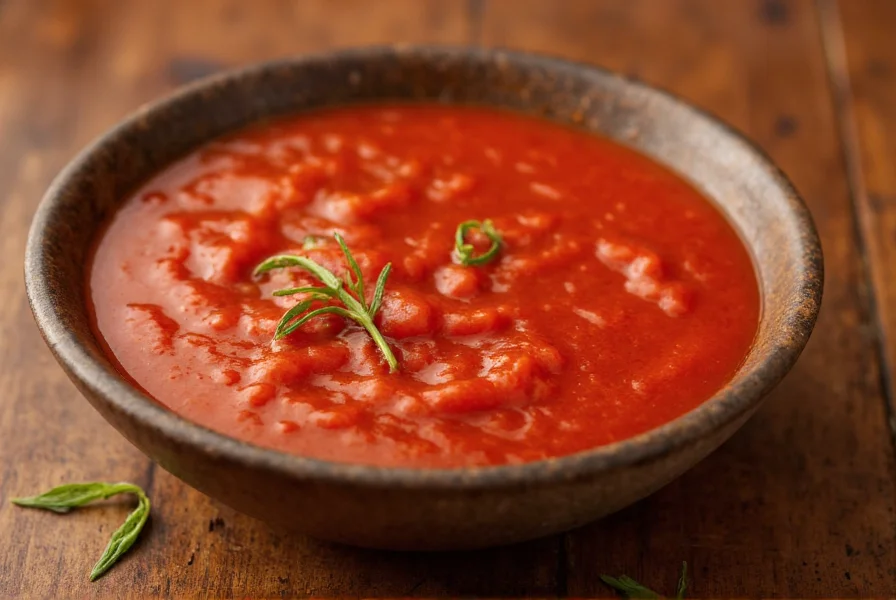Choosing the right pepper sauce can transform your meals from ordinary to extraordinary. With hundreds of options available, from mild to extremely hot varieties, selecting the perfect sauce requires understanding several key factors that align with your personal taste and cooking requirements.
Understanding Pepper Heat Levels and Your Tolerance
Pepper heat is measured using the Scoville scale, which quantifies capsaicin concentration. When learning how to pick a pepper sauce, start by assessing your personal heat tolerance:
| Scoville Heat Units | Pepper Type | Taste Experience |
|---|---|---|
| 0-500 SHU | Pimento, Pepperoncini | Barely noticeable heat, sweet flavor |
| 2,500-8,000 SHU | Jalapeño, Chipotle | Moderate heat with earthy notes |
| 30,000-50,000 SHU | Cayenne, Tabasco | Significant heat with vinegar tang |
| 100,000-350,000 SHU | Habanero, Scotch Bonnet | Intense heat with tropical fruit notes |
| 1,000,000+ SHU | Ghost Pepper, Carolina Reaper | Extreme heat requiring caution |
Beginners should start with lower Scoville units and gradually work up as your palate adapts. Remember that heat perception varies based on individual biology and even the time of day.
Flavor Profile Considerations When Selecting Pepper Sauce
Heat is just one component of pepper sauce selection. The complete flavor profile matters significantly when you're trying to pick a pepper sauce that enhances your dishes:
- Fruit-forward sauces (mango, pineapple, peach) pair well with seafood and tropical dishes
- Smoky varieties (chipotle, smoked paprika) complement grilled meats and barbecue
- Vinegar-based sauces provide brightness that cuts through rich foods
- Sweet and spicy combinations work well with Asian cuisine and dipping sauces
- Garlic-forward options enhance Italian and Mediterranean dishes
Consider keeping multiple pepper sauces on hand for different applications rather than searching for one universal solution. Professional chefs often maintain a "hot sauce pantry" with specialized options for specific cooking needs.

Intended Use: Cooking Versus Finishing
One of the most overlooked aspects when learning how to choose the right hot sauce is understanding how you'll use it:
For cooking applications: Select sauces with higher vinegar content and simpler ingredient lists. These withstand heat better and maintain flavor integrity during cooking. Look for options specifically labeled "for cooking" or "culinary use."
For finishing/topping: Choose more complex sauces with nuanced flavors that would be lost during cooking. These often contain fresh ingredients, higher quality peppers, and complementary flavors that shine when added after cooking.
Never assume a sauce works equally well for both purposes. Many excellent finishing sauces lose their distinctive characteristics when heated, while some cooking sauces lack the complexity needed as a finishing touch.
Reading Labels and Ingredient Quality
When trying to pick a pepper sauce, scrutinize the ingredient list carefully. High-quality sauces typically feature:
- Peppers listed as the first ingredient (not vinegar or water)
- Minimal preservatives and artificial additives
- Natural sweeteners like honey or fruit instead of high-fructose corn syrup
- Clear indication of pepper variety used
- Transparent sourcing information
Avoid sauces where "spices" or "natural flavors" are vague ingredients. Premium pepper sauces proudly showcase their specific pepper varieties and production methods. Artisanal producers often include harvest dates and pepper origin information.
Matching Pepper Sauces to Specific Cuisines
The most effective approach to selecting pepper sauce involves matching it to your cuisine:
- Mexican/Latin American: Look for sauces featuring jalapeño, serrano, or habanero with citrus notes
- Asian: Choose sauces with gochugaru, bird's eye chili, or sambal-style preparations
- Caribbean: Opt for Scotch bonnet-based sauces with tropical fruit elements
- American BBQ: Select vinegar-based sauces with smoked peppers
- Mediterranean: Try sauces featuring Aleppo pepper or Calabrian chili
Understanding regional pepper traditions helps you select authentic flavor profiles rather than generic hot sauces that don't complement specific dishes properly.
Practical Testing Approach for Selecting Pepper Sauce
When learning how to choose the right hot sauce, implement a systematic testing approach:
- Start with milder options to calibrate your palate
- Test sauces with neutral foods like plain chicken or tortilla chips
- Take notes on heat progression (immediate vs. delayed)
- Assess flavor complexity beyond just heat
- Consider how the sauce interacts with different food types
- Wait 15 minutes between tastings to reset your palate
Many specialty food stores offer tasting opportunities. When shopping online, look for retailers that offer sampler packs containing multiple varieties at different heat levels.

Storage and Shelf Life Considerations
Proper storage affects both safety and flavor when you've picked your pepper sauce:
- Vinegar-based sauces typically last 6-12 months unrefrigerated after opening
- Fresh pepper sauces with minimal preservatives require refrigeration and last 1-3 months
- Sauces with fruit or vegetable content have shorter shelf lives
- Always check for signs of spoilage: mold, off smells, or separation that doesn't remix
- Store in a cool, dark place away from heat sources
Don't judge a sauce solely by its shelf life—some artisanal producers create fresh, preservative-free sauces with shorter lifespans but superior flavor.
Common Mistakes to Avoid When Selecting Pepper Sauce
Many people make these errors when trying to pick a pepper sauce:
- Choosing solely based on heat level without considering flavor profile
- Assuming all hot sauces work equally well for all dishes
- Ignoring ingredient quality in favor of extreme heat
- Not considering how heat builds over time (immediate vs. delayed burn)
- Purchasing large quantities before properly testing a new sauce
- Storing sauces improperly, affecting flavor and safety
Remember that the "hottest" sauce isn't necessarily the "best" sauce—it's about finding the right balance of heat, flavor, and application for your specific needs.
Building Your Personal Pepper Sauce Collection
Instead of searching for one perfect pepper sauce, develop a curated collection:
- A mild option for everyday use (5,000-15,000 SHU)
- A versatile medium-heat sauce (20,000-40,000 SHU)
- A specialty sauce for specific cuisines
- A finishing sauce with complex flavor notes
- A cooking-specific sauce with heat stability
This approach ensures you always have the right tool for each culinary task rather than compromising with a single sauce that only partially meets your needs.
Final Selection Tips
When you're ready to pick a pepper sauce, keep these final considerations in mind:
- Support small-batch producers for unique flavor profiles
- Consider the sauce's versatility across multiple dishes
- Check for transparent sourcing and production methods
- Don't be swayed by marketing claims without tasting first
- Remember that heat tolerance develops over time—start moderately
Selecting the perfect pepper sauce is a personal journey that evolves as your palate develops. The best approach combines knowledge of pepper varieties, understanding your own preferences, and practical testing to find sauces that genuinely enhance your cooking experience.
Frequently Asked Questions
How do I know if a pepper sauce is too hot for my tolerance?
Start with sauces below 5,000 Scoville units if you're new to hot sauces. Signs you've chosen a sauce too hot include immediate burning sensation that doesn't subside, physical discomfort, or needing dairy to counteract the heat. Gradually build your tolerance by trying slightly hotter sauces over time rather than jumping to extreme heat levels.
What's the difference between hot sauce and pepper sauce?
While often used interchangeably, "pepper sauce" typically refers to sauces made primarily from peppers with minimal additional ingredients, while "hot sauce" is a broader category that may include vinegar-based sauces with various spices. Pepper sauces often highlight specific pepper varieties, whereas hot sauces may blend multiple peppers and flavor elements.
Can I use the same pepper sauce for cooking and as a finishing sauce?
While possible, it's generally not recommended. Cooking sauces typically have higher vinegar content and simpler profiles that withstand heat, while finishing sauces contain more delicate flavors that would be lost during cooking. For best results, maintain separate sauces specifically formulated for each purpose to maximize flavor impact in your dishes.
How long does opened pepper sauce last in the refrigerator?
Vinegar-based pepper sauces typically last 6-12 months refrigerated after opening, while fresh pepper sauces with minimal preservatives last 1-3 months. Always check for signs of spoilage including mold, off odors, or separation that doesn't remix when shaken. When in doubt about a sauce's freshness, it's safer to discard it.
What should I look for in a high-quality pepper sauce ingredient list?
Peppers should be the first ingredient, followed by minimal, recognizable components. Avoid sauces with "spices" or "natural flavors" as vague ingredients. High-quality sauces typically contain 5 or fewer ingredients with transparent sourcing. Premium options often specify the exact pepper variety used and may include harvest dates or origin information for the peppers.











 浙公网安备
33010002000092号
浙公网安备
33010002000092号 浙B2-20120091-4
浙B2-20120091-4